The Sling High Wing is evolutionary and revolutionary at the same time. It’s an entirely new concept for low-wing-producing Sling Aircraft. According to Sling Aircraft founder and chief designer Mike Blythe, the High Wing stemmed from a request by an older, less flexible and larger customer who said, “If you build a high-wing airplane that will be easier to get in and out of, I’ll buy it!” And so, the story goes, the High Wing was born.
We’re not the first to call it an upside-down Sling. When company test pilot Sean Russell talks about the airplane, he refers to it as “the upside down one.” Indeed, if you look closely at the wing, it does appear to be the same as the one on a TSi sitting beside it—because it is. The metal, pulled-rivet-construction wing is simply grafted to a new fuselage designed for roominess and easy entry. (No, it actually wasn’t quite that simple.)
The High Wing has been flying for about a year now, and three kits are currently under construction by customers, even while some minor modifications to the design are in progress. It is a dynamic project, evident by the pace of development and the effort put toward it during our visit to Sling’s headquarters in Johannesburg, South Africa.
What’s the Market Niche?
The High Wing is designed to fill a niche in the kit-aircraft market currently underfilled—but that has been occupied for years by the most prolific general aviation aircraft of all time—the Cessna 172. While the Sling High Wing has a bit less horsepower and slightly lower gross weight than the Cessna, it is, like the Skyhawk, a four-seat airplane with a generously sized baggage compartment. And as is true with the Cessna, you can only max out the luggage space if you don’t also fill all four seats. In the Sling, the rear seat has plenty of room for two full-sized adults, and the Rotax 915 iS engine is turbonormalized to provide 141 hp (max) to more than 16,000 feet. Yes, that is less than the Cessna has at sea level, but once you hit about 8000 feet, the advantage switches to the Sling. Plus, it’s a new, clean design, which helps make it fast compared to the Cessna.
Sling’s High Wing joins other high-wing designs in the kit world, of course, but the vast majority of them are two- or three-seaters. There’s the three-seat Legend Cub and the Glasair Aviation Sportsman, which is listed as a 2+2. (With the latest iteration of the rear-facing aft seats, it’s closer to a true four place as long as the passengers don’t mind facing the tail.) You can equip a Zenith CH 750 SD with a third seat, and we don’t yet know how many seats Van’s announced high-wing, the RV-15, will have—so it’s still anyone’s guess if the Sling gets to stand toe-to-toe with the upcoming RV as well as the others.
Let’s Take a Tour
For now, let’s focus on the Sling. You’ll notice a couple of things. First, it has no struts, contributing to a clean look. Second, the wing sits pretty high, and while at first you might notice just a bit of a camel hump where the wing attaches to the fuselage, this impression seems to disappear after looking at the airplane for just a few minutes.
This “feature” is what makes it strutless while giving a roomy cockpit. If you’re going to build a strutless high wing, you need a strong (read: thick) carry-through structure. You can either move the spar fore and aft inside the wing—not possible if you’re planning to use the same parts as your existing low-wing model—or you need to run that spar through the cabin, which eats into headroom. Or, as Sling has done, you can place the wing on top of the cabin, hence the camel hump and excellent headroom.
The airplane has large doors on the side, which open almost 90° on their forward hinges. Ingress to the cockpit is made easier with a small step located on the main gear strut. Access to the front seats is made even easier by a clever control-stick design—it is bowed well forward, allowing you to slide your inside leg behind the stick, instead of having to lift over it.
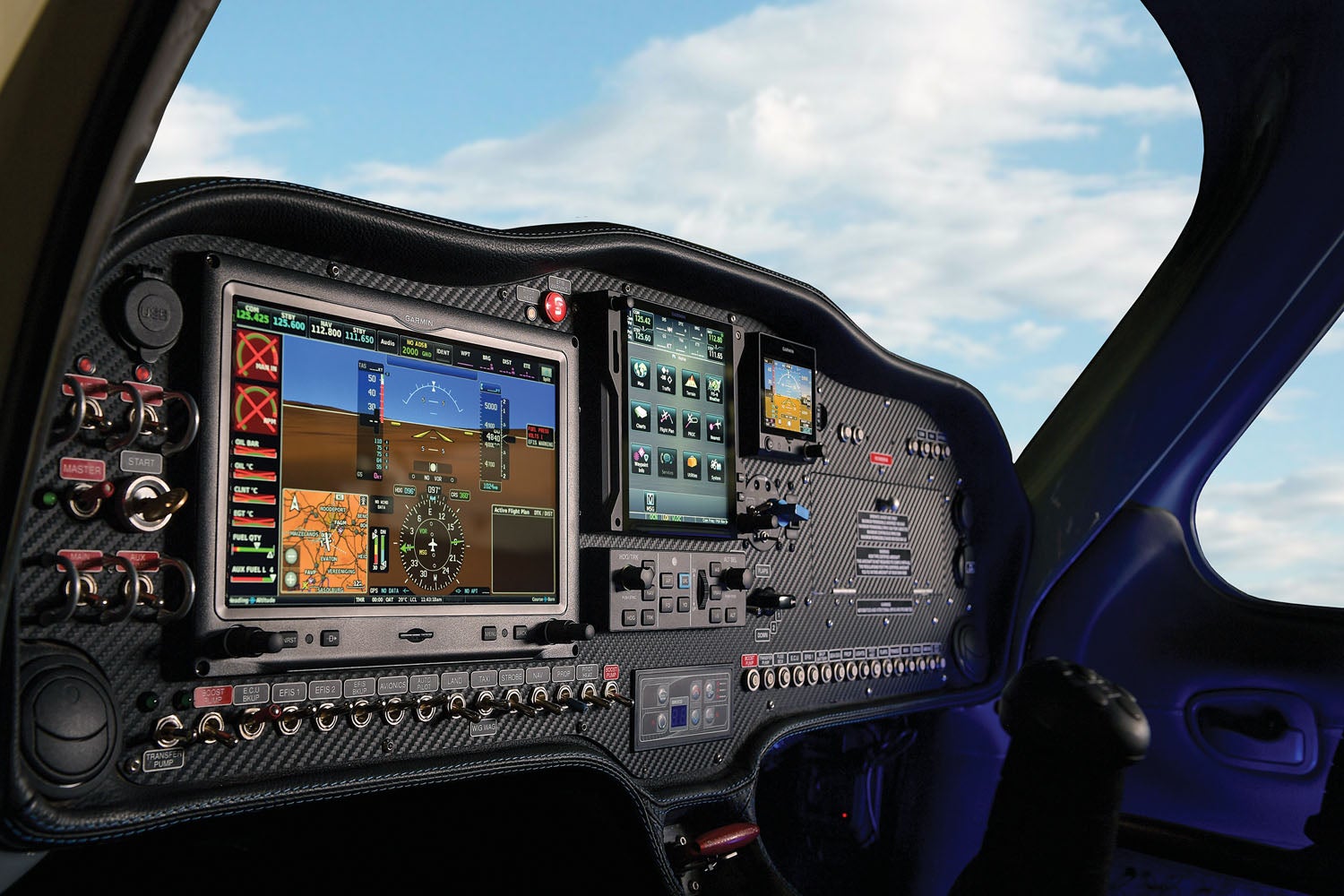
The seats, both front and back, are comfortable and built in-house at Sling. The company is very vertically integrated and has both upholstery and paint departments. Just like in a Cessna, it’s best to move the seats aft to get in, then slide them forward to the flying position. Once that’s done, rear-seaters could almost play handball in the space provided for their legs. In fact, the engineering department is considering moving the rear seats forward to add space to the already adequate baggage area. Moving the rear seats forward would also put them closer to the CG and give passengers a better ride in turbulence.
The cockpit is typical Sling, with upholstery, side panels, carpets and instrument panel finishes standard. Their design intentions are to give you a kit that produces an airplane that appears to have a modern automotive interior, and they do a good job at it. Their prototype even looks very finished, whereas most prototypes we fly are often rough and have bare aluminum (or fiberglass) inside.
For avionics, the factory ship is fitted with a single-screen Garmin G3X Touch EFIS, a G5 backup instrument and an IFR navigator along with a Garmin autopilot. The panel also includes the electric prop controller and flap-position selector in addition to the standard complement of switches to control everything, including the engine. The fuel selector is located above the windshield, in the center, but is going to be moved down to the bottom of the center of the main panel in production aircraft. There is also a parachute handle and parking-brake switch at the front of the center console, just ahead of the T-handle throttle.
Structural Details
One thing you’ll notice about the cabin is that it is all fiberglass, with no internal steel frame. The loads that many aircraft of this style take up with a steel “roll cage” are transferred instead with beefy carbon-fiber beams embedded in the cabin layup itself. Our test pilot noted—and we confirmed when we were visiting the composite shop at the Sling facility—that they are working on making the doors fit better. There was a little leakage when we flew.
Moving to the rest of the fuselage, the tail cone is made of aluminum and mechanically attached to the aft end of the cabin. It’s a nice use of materials. The complex cabin shape is more easily rendered in composite, while the aluminum tail cone works just fine where all the lines are straight. The tail surfaces are all aluminum, of course, and there is a composite dorsal fin that blends things together.
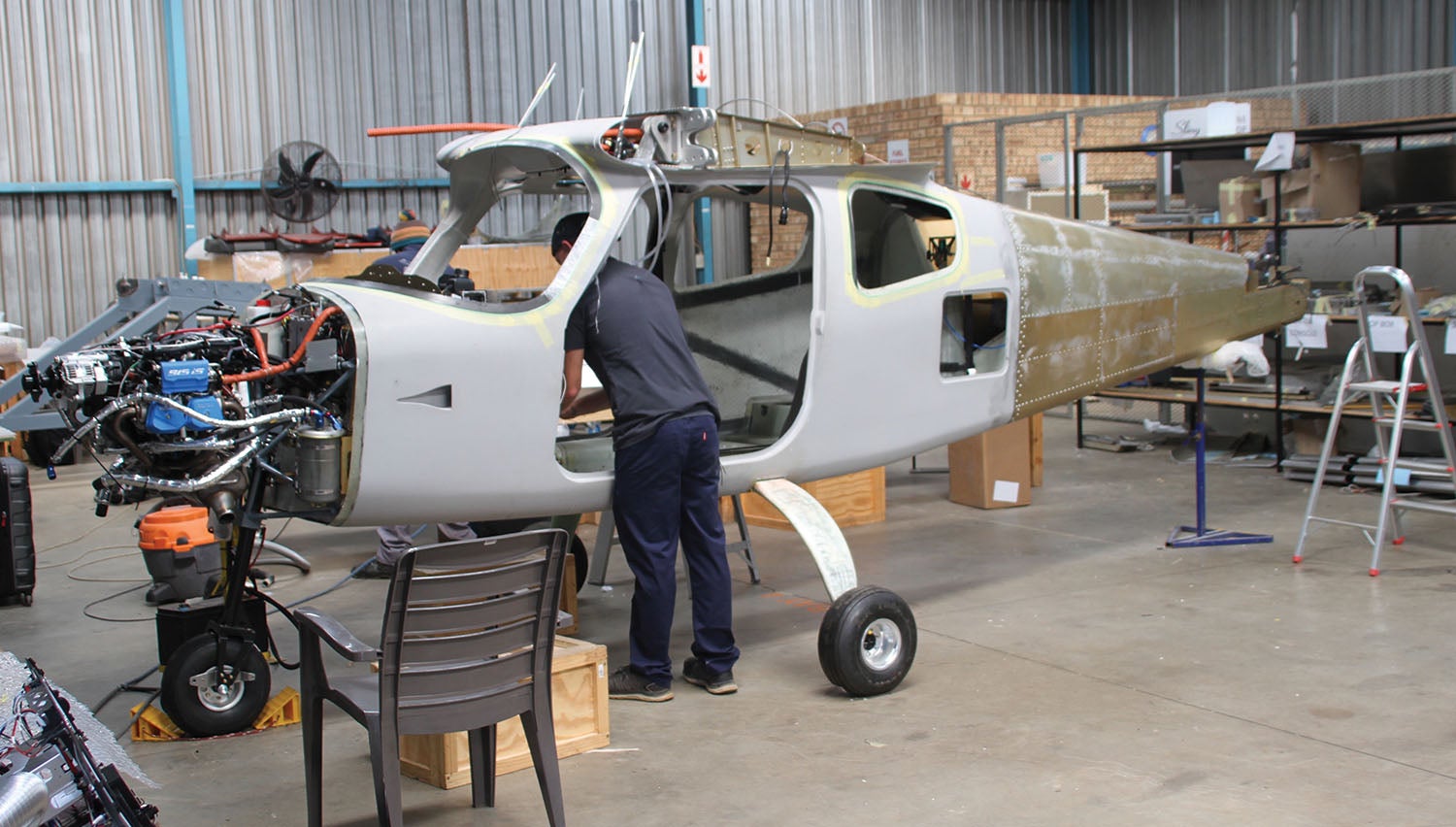
Moving back up front, the beauty of the design shows in the fact that everything forward of the firewall is bolt-on equivalent to the low-wing TSi—this allows tremendous levels of efficiency at the factory in producing kits. The top of the firewall itself is a little taller than the TSi’s, and this was done as much for aesthetics as anything else. But it also means that the top cowl is different on the two planes.
Along with the Rotax package, Sling installs an Airmaster electric constant-speed prop, which works remarkably well in this installation. The prop is managed with a rotary switch in the cockpit that selects discrete configurations: takeoff, climb, cruise. It can also be manually set, with a separate switch to increase or decrease pitch—although in this mode, it is no longer constant speed.
The landing gear for the High Wing is a shaped composite slab—two of them, actually: one for the right, one for the left. They are bolted in place into a molded tunnel in the fuselage. The nose gear is, again, the same as on the TSi because they use the same motor mount. The taildragger’s tailwheel is attached with a carbon-fiber spring, but this is not necessarily the final configuration—they are still working on the optimum tailwheel assembly and mount. They told me they are looking at a spring/damper system like the T3 to try on the next iteration.
Fuel is all located in the wing, except for a couple of gallons in a header tank mounted between the instrument panel and firewall. Maximum fuel capacity is around 50 gallons—plenty for a bladder-busting eight hours of flying in economy mode.
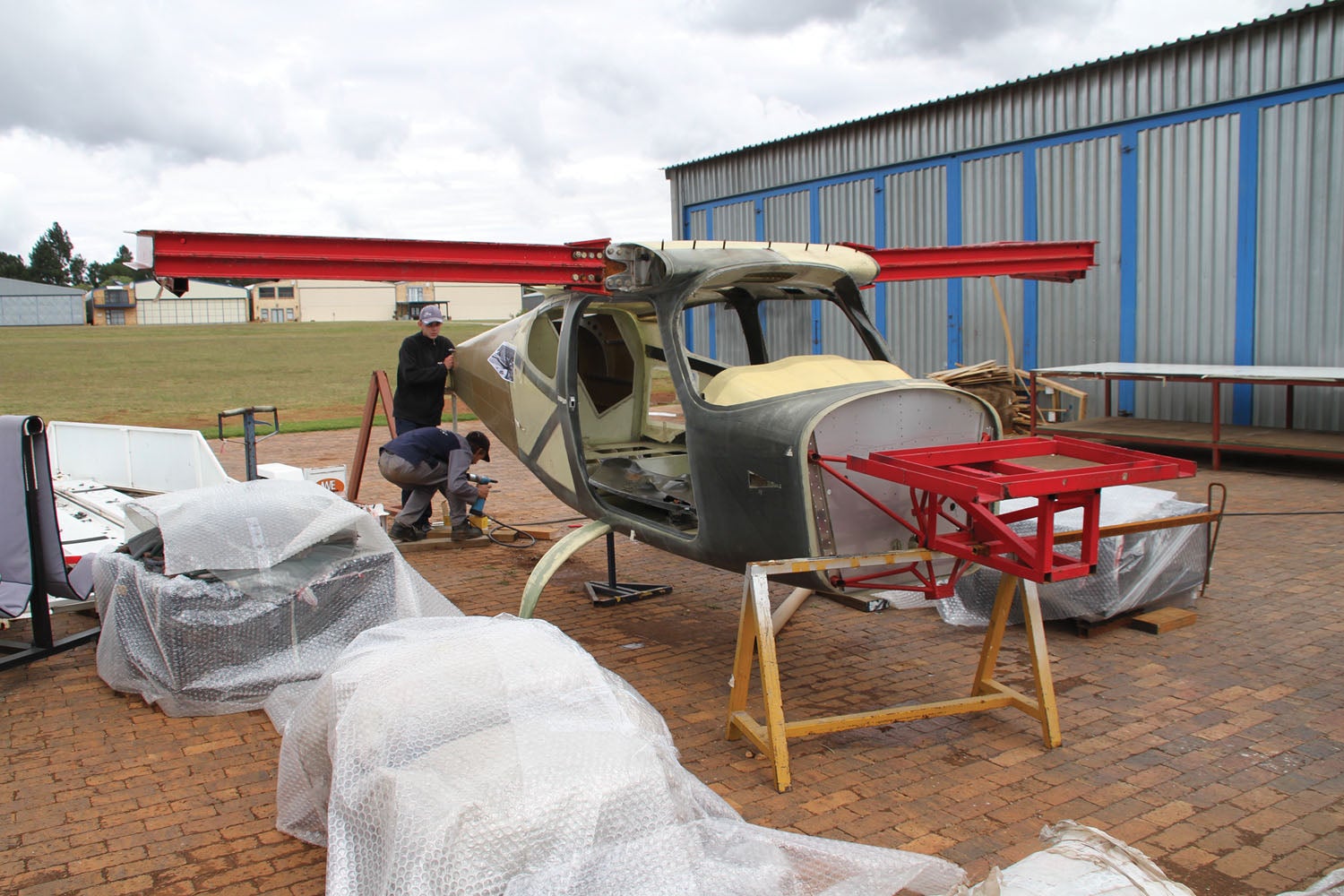
Let’s Go Fly!
It was a beautiful calm day, with crisp morning temperatures and moderate highs in the afternoon—almost a standard atmosphere in Johannesburg. That part of the continent is high—like Denver-plus high—so our density altitude hovered just over 6000 feet. I climbed into the left seat of the trike High Wing to start the day and Sean talked me through the start procedure. Fuel-injected Rotaxes start like a car, but there are a few more switch throws than with a standard Lycoming. These motions basically make sure that the backup engine control unit is working, as well as the primary and backup fuel pump circuits. It’s not complicated, just different. After two days of flying both High Wings, I had the start procedure down to memory.
With the engine running, we powered up the rest of the avionics and taxied out to the runway at Tedderfield Air Park, a nice one-runway airport with lots of grass on either side of a 30-foot-wide strip of pavement. The High Wing is currently fitted with dual differential brakes, which is different than Sling’s usual setup of a single brake lever to slow the plane in a straight line and nosewheel steering used for directional control. This aircraft also has direct nosewheel steering, but I find the differential brakes to be normal enough that I like them as well. Sean demonstrated to me that we could turn as tight with the steering alone as with a locked brake on one side, so it probably doesn’t make any difference—they’ll let the marketplace sort it out. You could say that they’ll let their customers vote with their feet.
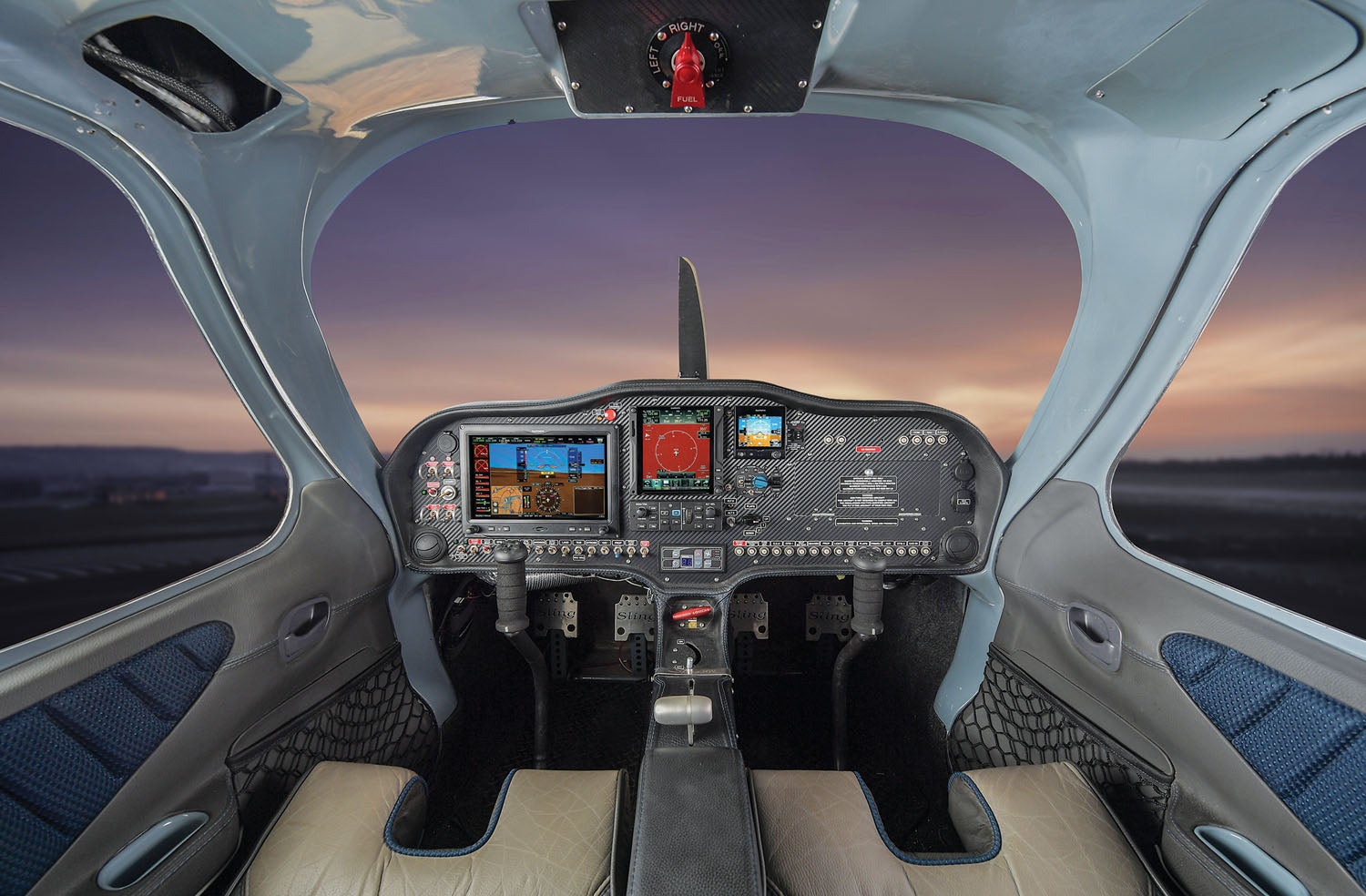
Run-up was standard Rotax—lane checks, pump checks, then tests for the prop controller in both manual and automatic. With the checks complete, we configured for takeoff—trim neutral, and flaps to 10°. It’s probably worth talking about the flap control here. A rotary switch is labeled Flaps 1, Flaps 2 and Flaps 3. Currently, Flaps 1 is 10° of deflection, Flaps 2 is 20° and Flaps 3 (labeled on one of the panels as simply Down) is 30°. Sean feels, and I concur, that there is a little too much drag for takeoff with Flaps 2, but the airplane would be happier with a little more lift than Flaps 1. So he is hoping to have the controller adjusted to provide 15° for Flaps 1, which is probably a good compromise. Flaps 2 would be reserved for short/soft operations. We flew it as-is and it worked fine for all operations we conducted, including landing and taking off from a rough, narrow bush strip.
For this paved runway takeoff, we simply lined up and added power. The Rotax was set to provide the full 141 hp with the takeoff flap setting and it accelerated smartly, if not stunningly. Sure, we all want more horsepower, but the truth is that the nose came up easily at about 30 knots, followed by liftoff somewhere in the 50s—and we were off in a pretty short distance. The airplane really wants to be leveled off to accelerate after liftoff—you can’t just haul back into a steep climb attitude, or you’ll just mush along and not gain anything.
Interestingly enough, the TSi, with the same engine and wing, accelerates more quickly and lifts off in a shorter distance. It appears that what we are really seeing—in addition to the fact that the prototype High Wing is heavier by about 150 pounds—is the benefit of ground effect helping the low wing get off the ground more quickly. It’s not often that you can directly compare the same wing in two different configurations, but this is a real-world example of just such a comparison.
Yaw and roll control were good right from the start of the takeoff roll, and while we noted a little tendency to drift left, it was easily controlled with a slight coordinated turn. We were soon climbing out and turning on course to leave the pattern for some air work. My first impression, which was borne out in the coming hours, was that the pitch and roll forces and rates are wonderfully harmonious. Yaw was very stable, and in fact it required almost no rudder input to keep the ball centered (see “Big Tail or Small,” below). The machine handled very much like a typical sport plane—your brain says, “I want to go over there,” and the next thing you know, you’re headed that way, almost without conscious control motions.
This airplane—unlike some “utility” airplanes—was happy making steep turns. The only problem is that with the high wing, as soon as you roll into the turn, the object that you wanted to look at on the ground (like the runway) suddenly disappears behind the wing. This, of course, is common to any high-wing configuration that doesn’t put the pilot well in front of the wing, so it is not a criticism of the Sling—it is simply a comment that when I’m in the pattern with this airplane, I need to fly it a little more sedately.
Once we left the pattern, we climbed for as much altitude as we could without intruding on the overlying airspace and put the plane through its paces. Turns showed self-coordinating yaw at almost any speed and bank angle—basically, adverse yaw was unnoticeable.
We slowed to the stall and, like most modern designs, it was hard to get any kind of a break without an abrupt (and non-intuitive) pull-up. The High Wing simply starts bobbing in pitch and develops a sink rate. I did a few Lazy 8 turns to see how it responded with changing speeds, bank and pitch conditions. Once again, it was pretty much on rails. We did these series clean and with flaps at 10° and 20°, and the results were the same.
Velocity, Confirmed
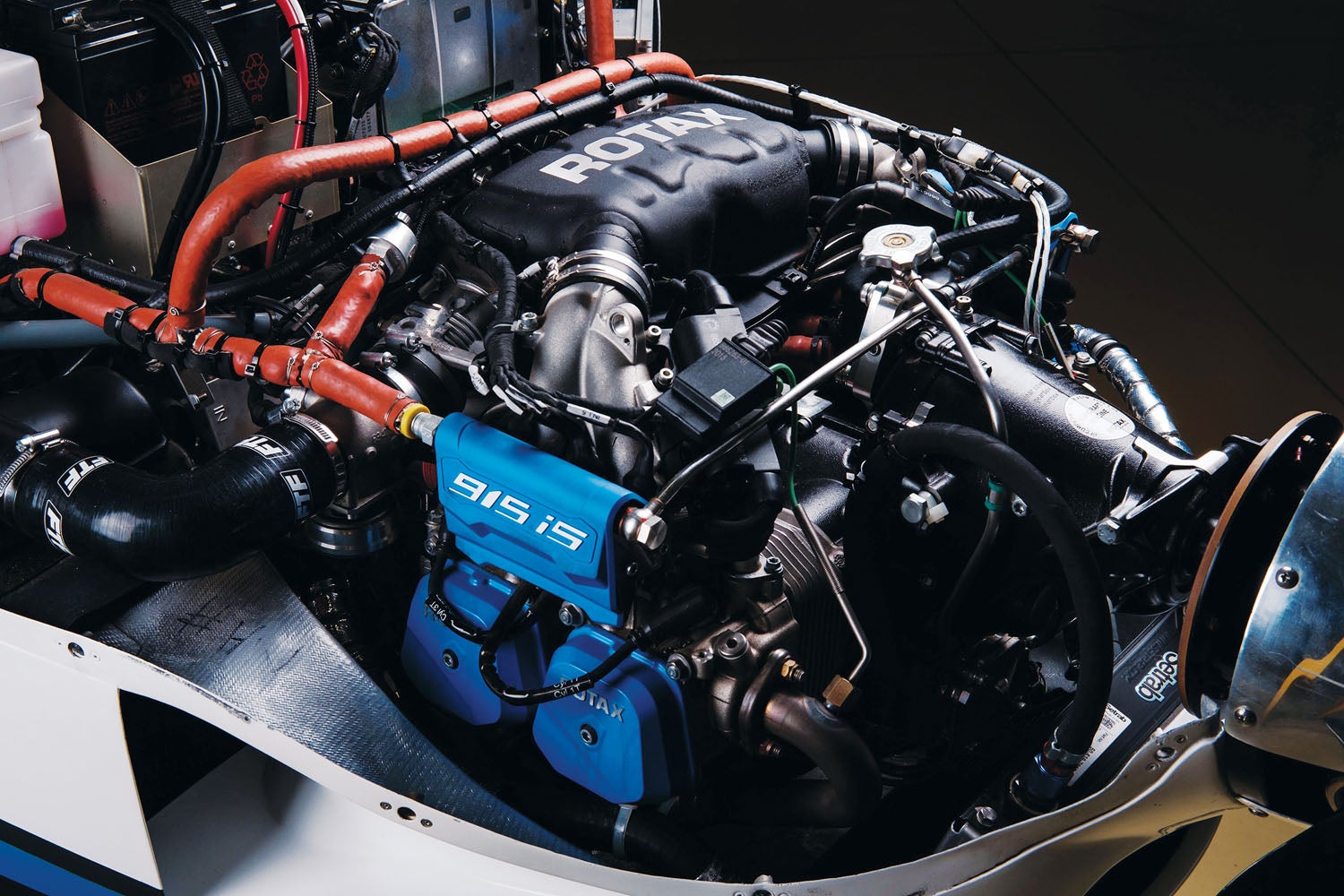
Speed performance was right on the predictions from the factory. The Rotax 915 iS motor goes into ECO (economy) mode when you pull the power back to 80%, and at this power setting, we consistently saw 135–136 KTAS on the EFIS. This was about 10 knots slower than the low-wing TSi with the same engine at the same power setting, but it’s about as expected due to a larger frontal area and the heavier weight of the prototype. It will be interesting to see if the lighter production models will go faster, but at any rate, if you’re thinking of comparisons, I doubt you’ll find a standard-engine Cessna 172 that will cruise anywhere near that, and certainly not on 7.7 gph.
The airplane was very stable in cruise, in smooth air or bumps—we got to fly in both. Pitch stability was excellent, and it was easy to hand fly it in bumps with altitude deviations of no more than plus or minus about 20 feet. The airplane is not a rocket ship, but it does just fine in climb. Remember that we were starting out with a density altitude of over 6000 feet in the Johannesburg area, so we weren’t going to be able to test sea-level performance. But up where we were flying, we could easily get 800–1000 fpm—the turbo definitely helps. Descents were well mannered—at one point we had to quickly duck under some clouds, and without pulling off power, I simply trimmed the nose down and the airplane didn’t show any tendency to run beyond the redline—but it nuzzled up to it just fine.
Landing Games
Getting back to the airport on our first day of flying, the winds were light and variable, and we had the runway to ourselves, so we did a bunch of takeoffs followed by a teardrop back to the same runway. The procedure in the pattern was pretty much Flaps 1 on downwind after slowing below 90 KIAS, then Flaps 2 on base, trimmed to 75, then Flaps 3 turning final with a final approach speed of about 70 KIAS. If you slowed it down below 65, you could feel the sink developing as you crept onto the back side of the power curve. That would be useful for very short landings, but not something you’d be doing on a normal approach. The airplane is just draggy enough that once it slows below 65, it wants to keep decelerating.
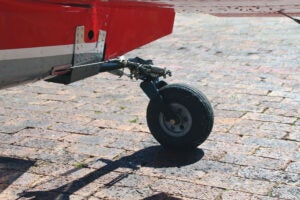
Touchdowns were easy and normal, and as with any airplane, you have to make sure you slow it down to touch down on the mains and not in a three-point attitude. Although the nose gear is quite robust, I never see any reason to tempt fate—so flare, flare, flare, then lower the nose when the mains are rolling. Directional control with the nosewheel steering and differential braking felt natural. Yes, I had time in both the trike and taildragger versions of the High Wing but am going to withhold detailed comments about the tailwheel version until Sling concludes its development program. There were enough changes expected that any initial impressions might be obsolete by the time you read this story.
Flying the Sling High Wing—even while the company engineers are making a few tweaks here and there—proved to me that this is a fine airplane with good handling qualities, benign low-speed characteristics and the ability to maneuver smartly and get where you want to go at a reasonable clip. I kept asking myself how I’d feel in the airplane on a typical Idaho backcountry airstrip and came to the conclusion that while there are certainly some very short ones where the workload would be higher than in a true STOL machine, the Sling High Wing would find the majority of those strips to be welcoming to someone who wants to find a quiet place to get away with a couple of friends and their camping gear.
Where Does It Fit?
The Sling High Wing finds itself in a niche largely by itself, at least for now. True four-seat airplanes in the Experimental realm are generally bigger than the Sling offering. The Van’s RV-10 and the Sportsman both use much larger, though not necessarily more expensive, engines. Aircraft like the Bearhawk four-seater are aimed more at the utility end of the market, as is the Murphy Yukon, which is just coming back into kit production. It isn’t that there are very few four-seaters in the homebuilt market, but there aren’t many like the Sling.
The Sling High Wing perhaps most pairs with the Sportsman, which is currently being produced in small numbers with a kit (all quickbuild components) starting at just under $120,000. The Sling High Wing is right there, with the main kits totaling $118,978, including a $27,995 upcharge for the full quickbuild components said to reduce build time by 500 hours (from 1400). The engine and FWF package (including the propeller, all hoses and support systems for the Rotax 915 iS) runs $59,995. Sling also quotes a full leather interior for $5995 and a full Garmin-based avionics package ready to go at $42,500. By the time you’re done, Sling estimates that you’ll have about $248K invested.
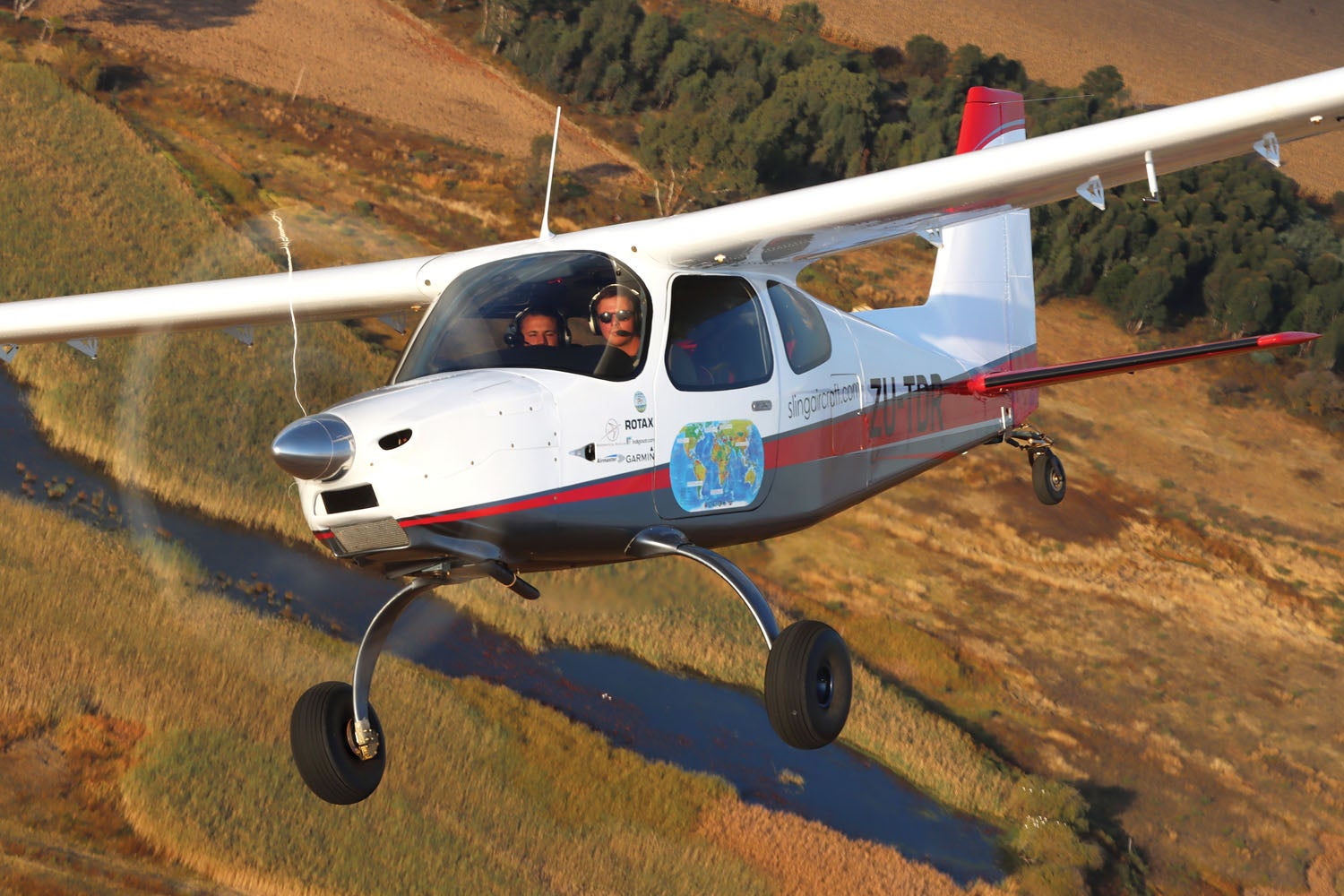
What does that get you? Performance wise, the High Wing does well, especially for the power, but some of the other big-engine models will out-muscle it. The turbo allows the Sling to maintain performance at altitude (and at high density altitudes), a strong selling point for pilots out West. And even if the Sling is better than most sport planes for grass and gravel strips, it’s not sold as a direct replacement for the Cub-style, hardcore backcountry models. (The lack of wing struts actually makes the Sling a bit harder to move around on the ground.) Finally, remember that Cessna never called the 172 a replacement for the 180.
To its credit, the High Wing is a very stable platform for cruising, and the fuel economy is impressive. The engine simply takes care of itself, and the airplane itself is easy to hand fly.
Could it use a little more power? Sure. But that’s true of just about any airplane. My guess is that it will come along sooner than you think. A long-rumored Rotax 916 with more power would spice up the High Wing nicely and help close the gap to the big-engined models in this segment. Also remember that production airframes are expected to be lighter than the prototype we tested; takeoff and climb performance could improve in subsequent High Wings.
There are more high-wing models coming from other kit companies, if rumors and announcements are true. But the Sling is leading the way to a new generation of airplanes for the next generation of homebuilding and flying.
Photos: Bruce Perkins, Paul Dye.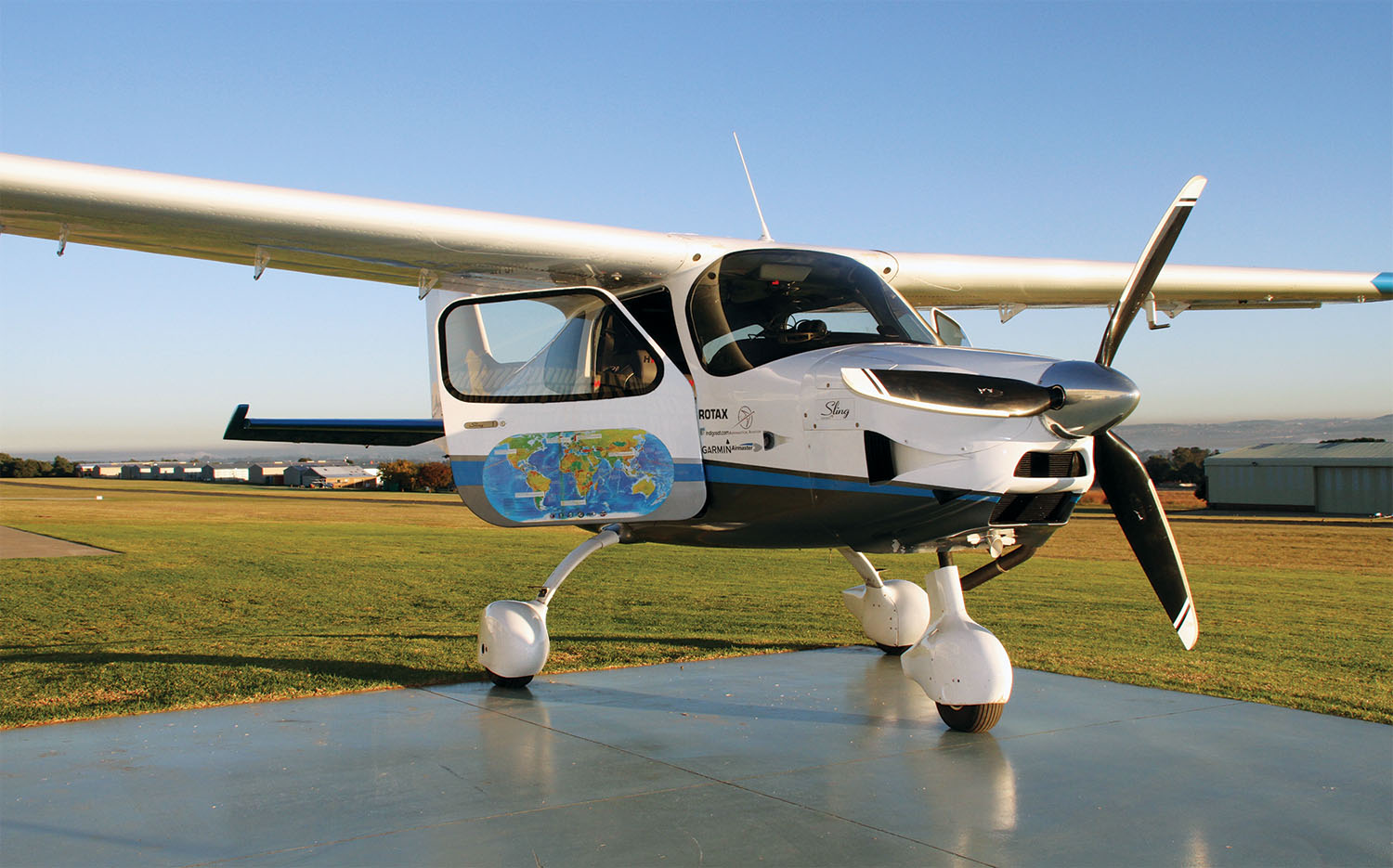
Building the High Wing
Sling is dedicated to producing airplanes and airplane kits of the highest quality—this is not an airplane that they would like you to declare “finished” with a bare interior and no paint. In fact, both of the prototypes that we flew had full leather interiors and carpeting already installed, and they had them since day one.
To get this type of “finished” airplane, the kit comes standard with all of the features, and that means that unlike many kit aircraft, you don’t have a lot of optional paths that many use to “make the plane their own.” Obviously, the Sling is going to be your airplane, and there are many options to choose from. But you are going to pretty much use their electrical wiring scheme, their fuel system, their oxygen system and so on. The individualists might balk at this, but they’d be throwing away a lot of fine engineering work and excellent parts should they deviate.
Sling produces completely finished, licensed aircraft for those buyers who live in countries where this is allowed, and this accounts for about half of their overall production. The other half are kits, built by the buyer. But not all of them get built in the garage—a large percentage are constructed by the builder at the factory or a build-assist center, such as the one in Torrance, California. Sling has very carefully crafted the program to meet the 51% rule checklist provided by the FAA, so while it is easy to question if the airplane is truly “homebuilt,” there is no doubt that it meets the letter of the law.
The kit is impressive. Hardware and components are packaged and labeled for every component and subassembly, making it very hard to put the wrong bolt someplace. The instructions are very good—well detailed and illustrated. This is not an early ‘70s kit or plansbuilt aircraft requiring a lot of fabrication; this is an assembly project.
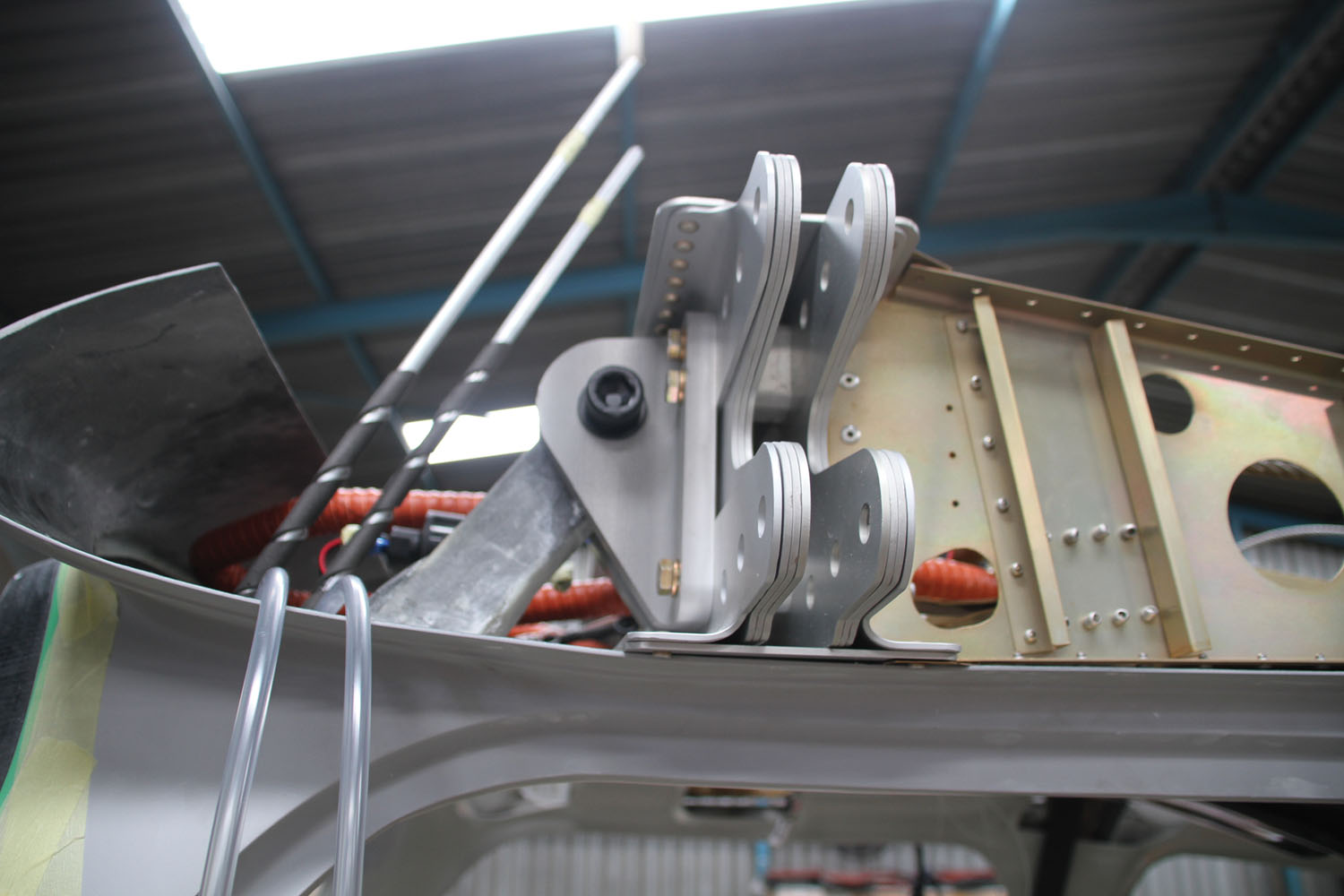
The Sling uses prepunched aluminum and a fiberglass cabin for primary structure. All aluminum parts are Alodined at the factory, arriving with a beautiful gold hue that tells you they have been treated and no further priming is required. Spars are prebuilt, so you can start Clecoing the wings and tail surfaces together right off the bat. Fastening is then done with pulled rivets—all work needing solid rivets is done at the factory. All leading-edge rivets and those rivets on the tail cone are flush, sitting in countersunk or dimpled holes. It’s a smart idea to use the countersunk rivets only where they’re most effective aerodynamically or cosmetically. Sling also fills all the factory-pulled rivets with a special epoxy, then sands off the excess, so that when the aircraft is painted, there are no mandrel holes visible in the finished rivets. It is a very slick look and doesn’t actually take that much extra time.
At the factory, the wings are constructed using special jigs on a table—the front and rear spars are bolted to these simple jigs (basically bent sheet metal) at each end, then the jigs are leveled with shims using a set of measurements. This guarantees the exact amount of washout when the wing is assembled. The jigs are far less complicated than ladder jigs or vertical jigging used to true up kit wings from other manufacturers. Other structures are essentially self-aligning due to the predrilled holes.
The cabin area is built up and then the tail cone is attached using a special large jig fixture at the factory. We didn’t get a chance to see how this might be done by a garage builder but were told that there will be detailed instructions to do it using measurements. Of course, the early customer kits are essentially quickbuilds, so that mating work is done before they get their hands on the plane.
Wiring and plumbing parts are all supplied ready to install, and we were told that bolting on the engine and components is a very quick process due to heavy pre-integration. We saw that at the factory, cowlings were not fit until after the fuselage had been painted—in fact, the fuselages were painted before the engine was installed. The process was to build and finish the structure, paint, then start attaching all the components that bolt into place.
Sling builds their own panels for the aircraft they produce finished, but leaves panel integration for Experimental/Amateur-Built versions to the builders. They can cut and wire their own panels, or use a panel builder/integrator as they wish. One of the first customers to build a High Wing used a panel integrator from Michigan to build their entire panel before installation in the aircraft and, yes, this is completely allowed by the rules.
A builder who travels to South Africa will benefit from the fact that the entire factory is essentially at their disposal; while we were there, three High Wings were under construction by the first customers and showed how involved both the customers and the factory were in the process.
We have also visited Sling in Torrance, California, the U.S. assembly center. While they have not yet gotten their first High Wing kit, they have helped builders produce a growing number of two- and four-seat Slings, with the most common airframe these days being the four-seat TSi. The kits as received from South Africa are beautifully crafted—and now we know how that is done, having seen the process from raw stock and rolls of carbon fiber to completed quickbuild kits being loaded into containers for shipment.
—P.D.
Those Filled Rivets
We own Sonex aircraft that are built with pulled rivets, and you can tell that they are pulled rivets when the aircraft is painted because of the little mandrel holes in the middle. Knowing that it is a pulled-rivet airplane, this doesn’t really bother me. But when you compare such an aircraft side by side with a Sling, you can tell there is a difference, even though the Sling is also built with pulled rivets. That is because Sling fills the center of every rivet with a special polyester resin filler, then sands the heads flat—leaving a very nice look.
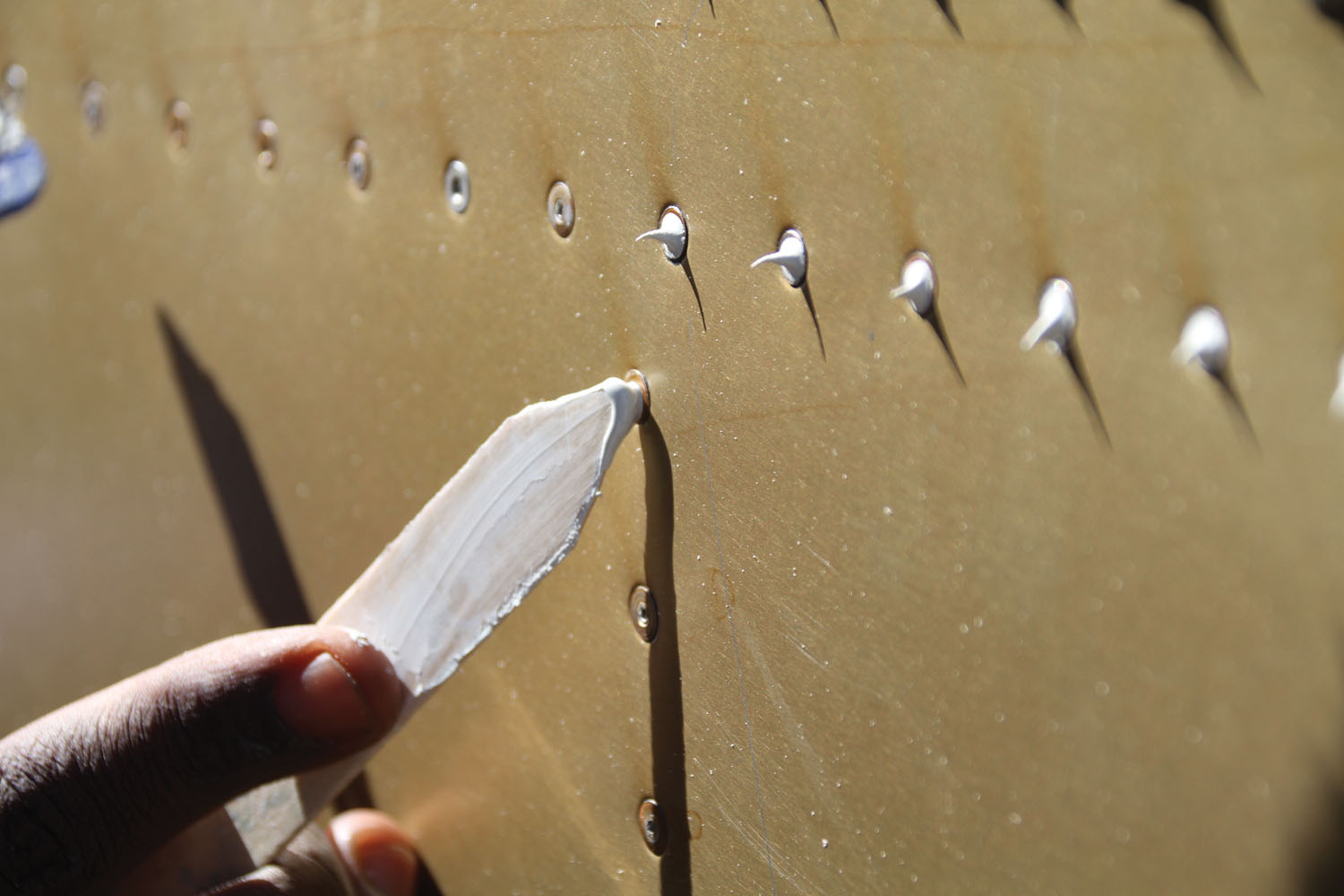
The process seems labor intensive, but actually doesn’t take that long. The filler is sort of drawn to a point off the mixing palette with the corner of a spatula, then “dripped and poked” into the hole of each rivet. Watching it done by someone who has a knack for it, it’s clear that a row of rivets can be done pretty quickly. The filler protrudes as a little point until it is hardened, then the excess is sanded off. This process does scuff off the skin alodining around the rivet, but Sling reports that it doesn’t appear to make any difference when it comes to final paint adherence or corrosion resistance, since they generally scuff off all the alodining before applying primer.
—P.D.
Big Tail or Small?
At the time I flew the two High Wing prototypes, Sling was trying to decide on which vertical tail height to make standard. The trike had a taller tail and the taildragger had the original shorter tail. Both were, in my opinion, quite acceptable, with the larger tail providing as much yaw stability as anyone would like—the airplane could be flown with both feet off the pedals and the ball never moved out of the center cage. The shorter tail on the taildragger showed that you needed to lead turns with a little rudder, as expected. But if you didn’t, the ball moved maybe half a ball outside the line before sliding back into the slot. While we didn’t get to fly either airplane with much wind, the two test pilots Sling has been using said that with a crosswind, the larger tail tended to weathervane a bit, and they thought that for this reason they might prefer the shorter tail for the taildragger—but they hadn’t tested the larger tail except on the trike, so it was speculation.
If I had to bet, I think that the taller tail will become standard for all of the High Wings, but Sling is still playing with it. Maybe they’ll pick something halfway in between. But it’s fine with either of the two current tails.
—P.D.
Sling High Wing
- Kit price (quickbuild): $119K
- Estimated completed price: $248K
- Estimated build time (standard): 1400 hr
- Number flying (at press time): 3
- Powerplant: Turbo Rotax 915 iS, 141 hp (max)
- Propeller: Airmaster electric constant-speed
- Powerplant options: None
AIRFRAME
- Wingspan: 31.3 ft
- Wing loading: 14.8 lb/sq ft
- Fuel capacity: 50 gal
- Maximum gross weight: 2314 lb
- Typical empty weight: 1279 lb
- Typical useful load: 1035 lb
- Full-fuel payload: 735 lb
- Seating capacity: 4
- Cabin width: 46 in
- Baggage capacity: 77 lb
PERFORMANCE
- Cruise speed: 145 KTAS (167 mph)
- Maximum rate of climb: 900 fpm
- Stall speed: 49 KIAS (56 mph)
- Takeoff distance: 720 ft
- Landing distance: 590 ft
Specifications and pricing provided by the manufacturer.
This article originally appeared in KITPLANES. For more great content like this, subscribe to KITPLANES!


































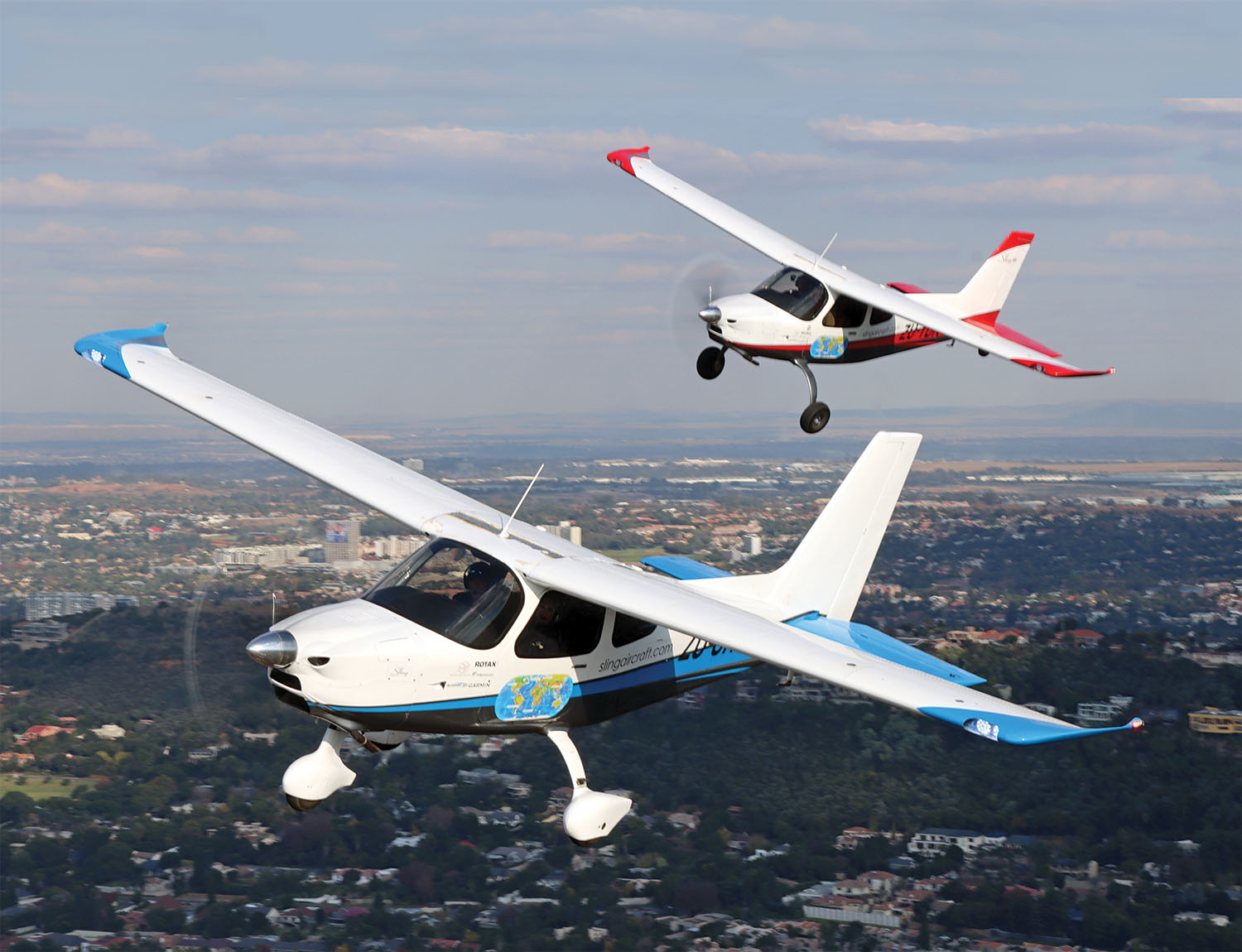
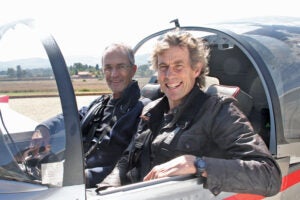
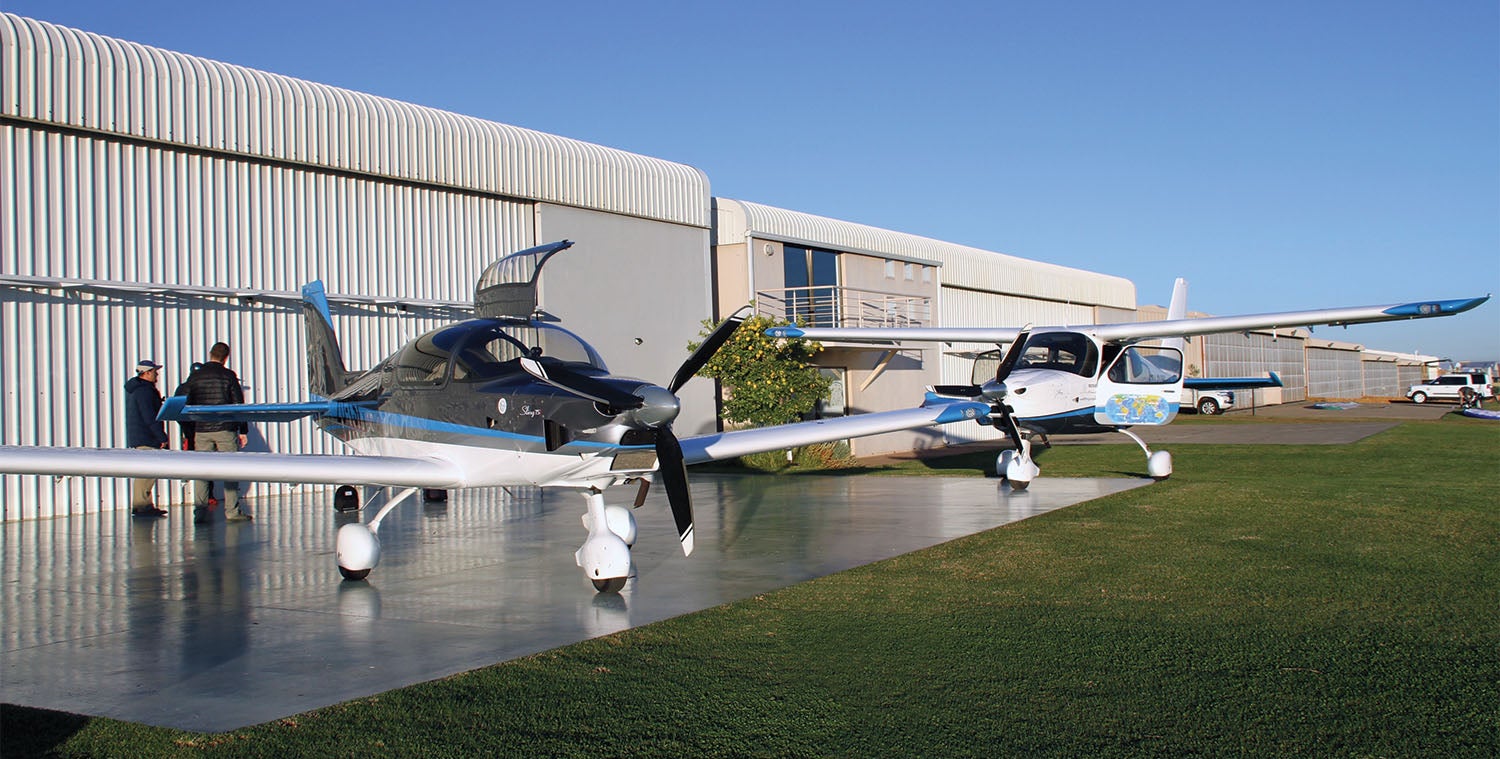
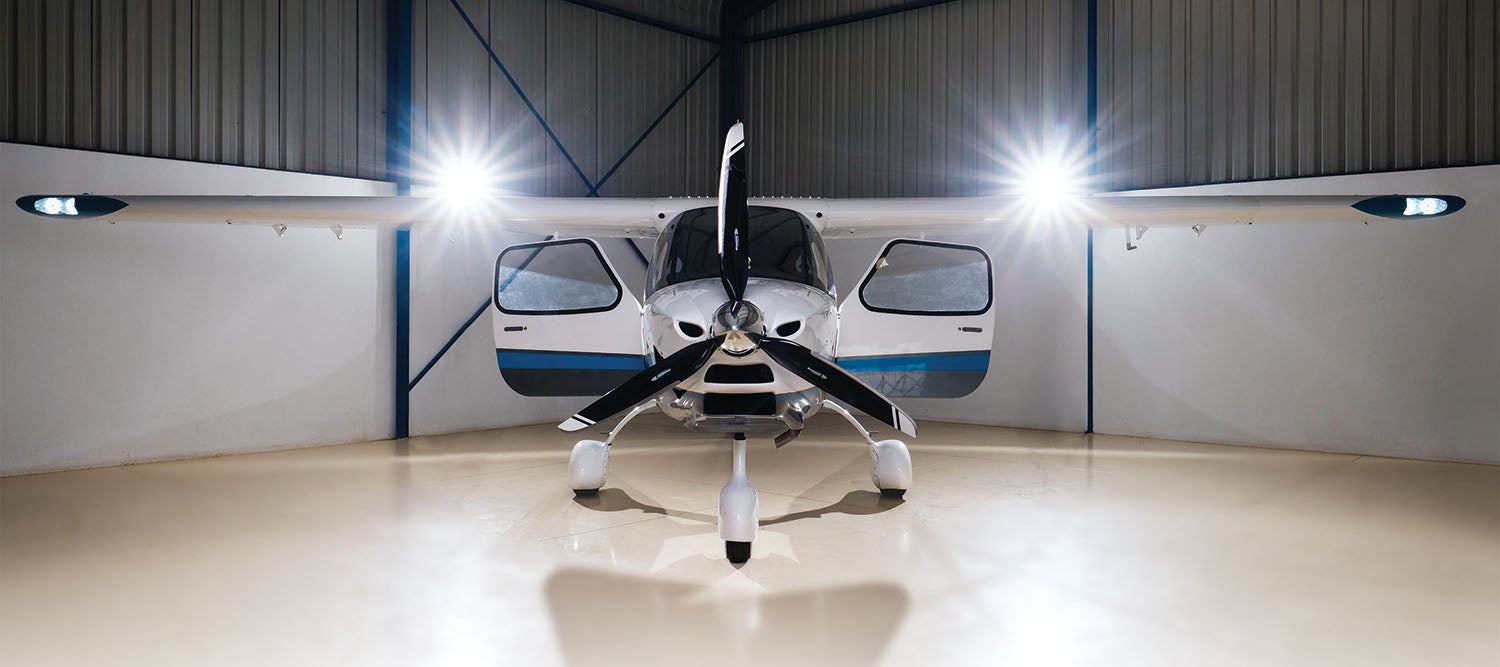
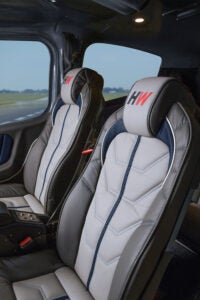
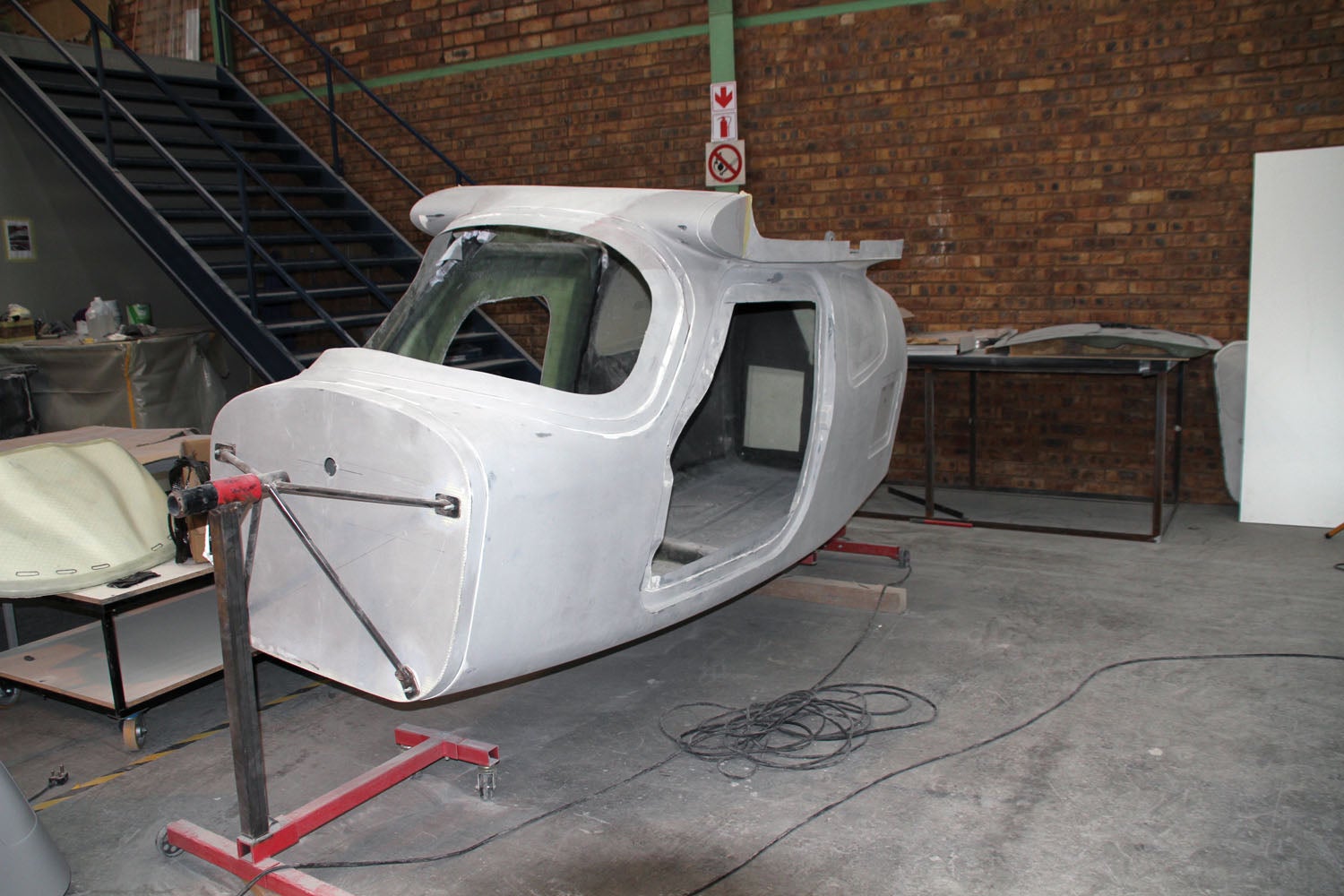
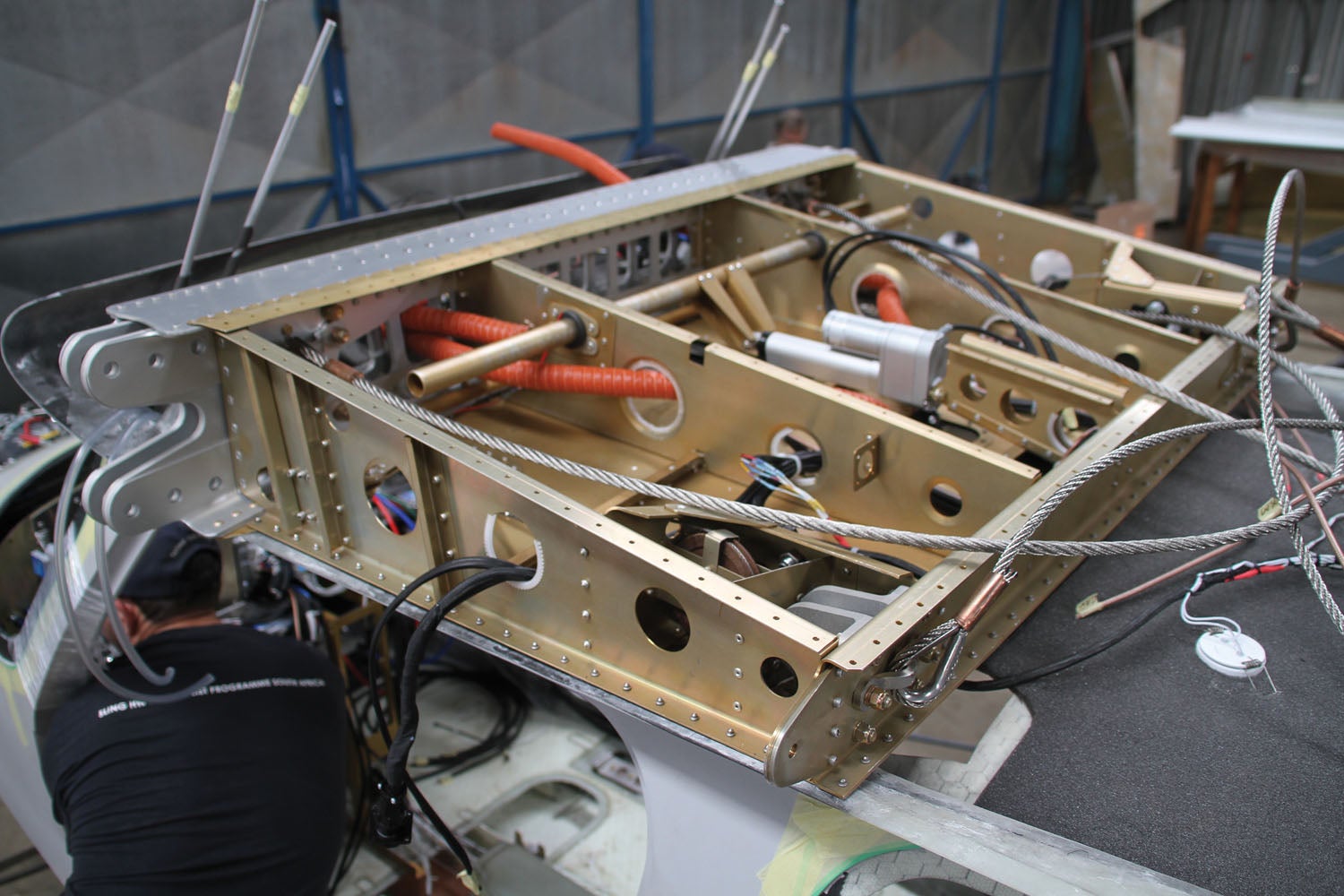
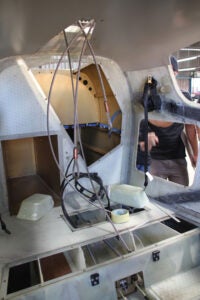
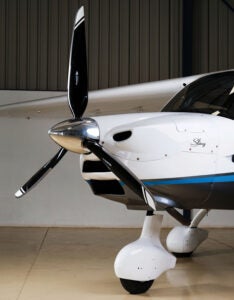
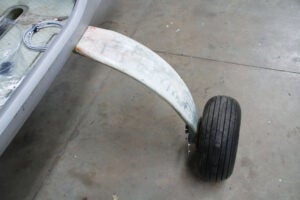
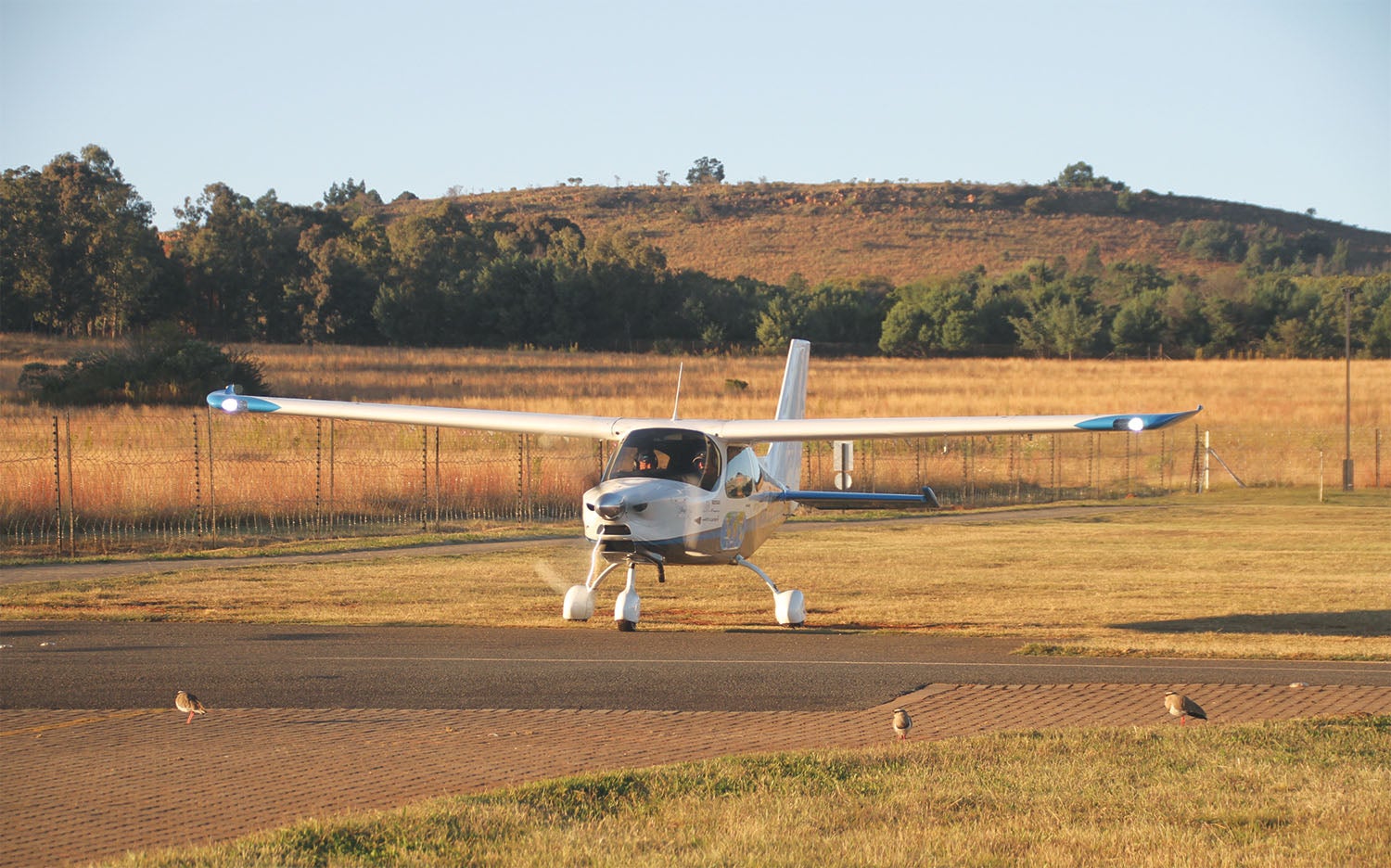
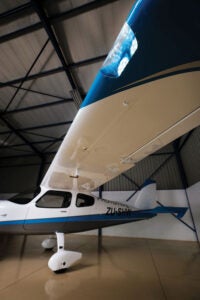
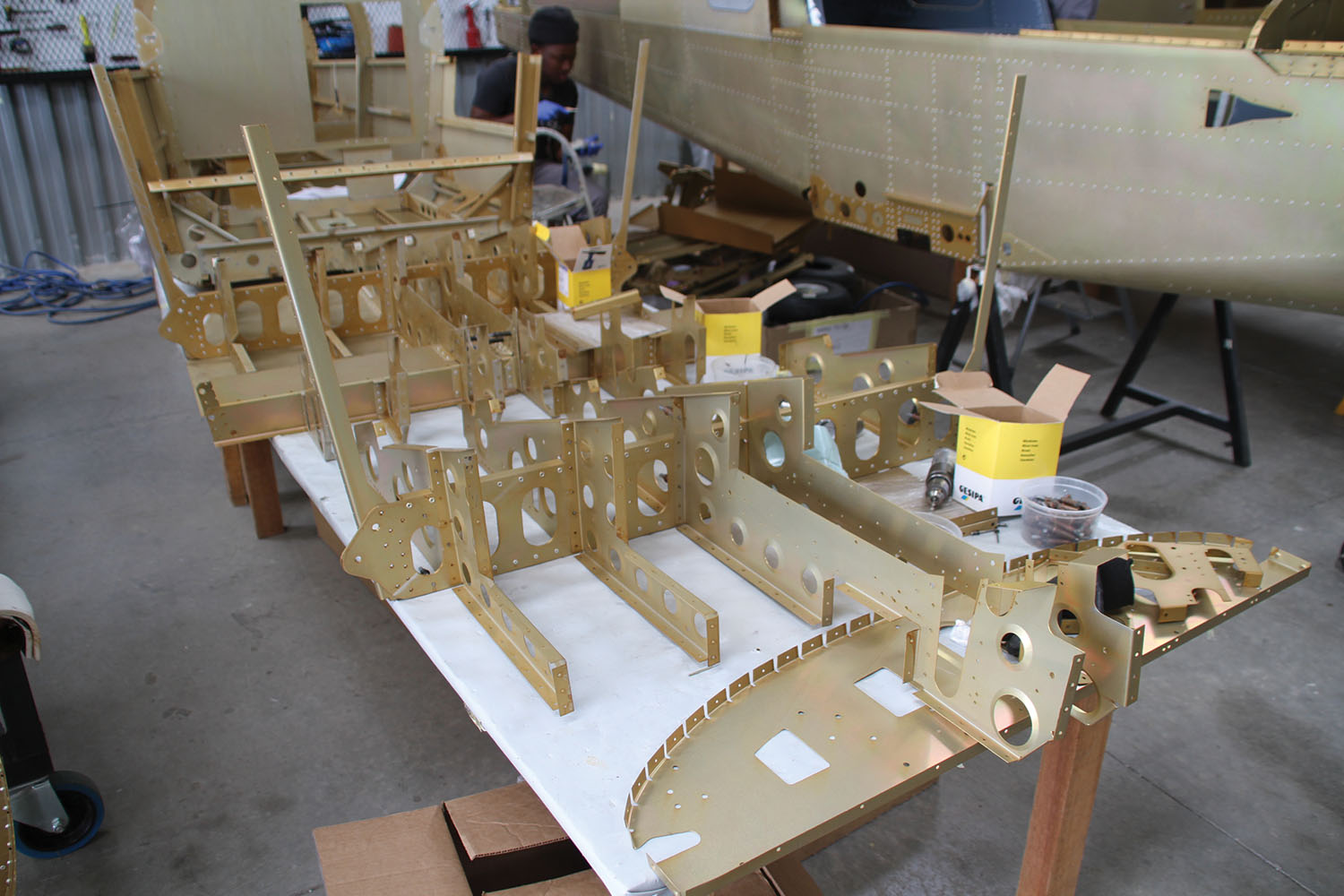
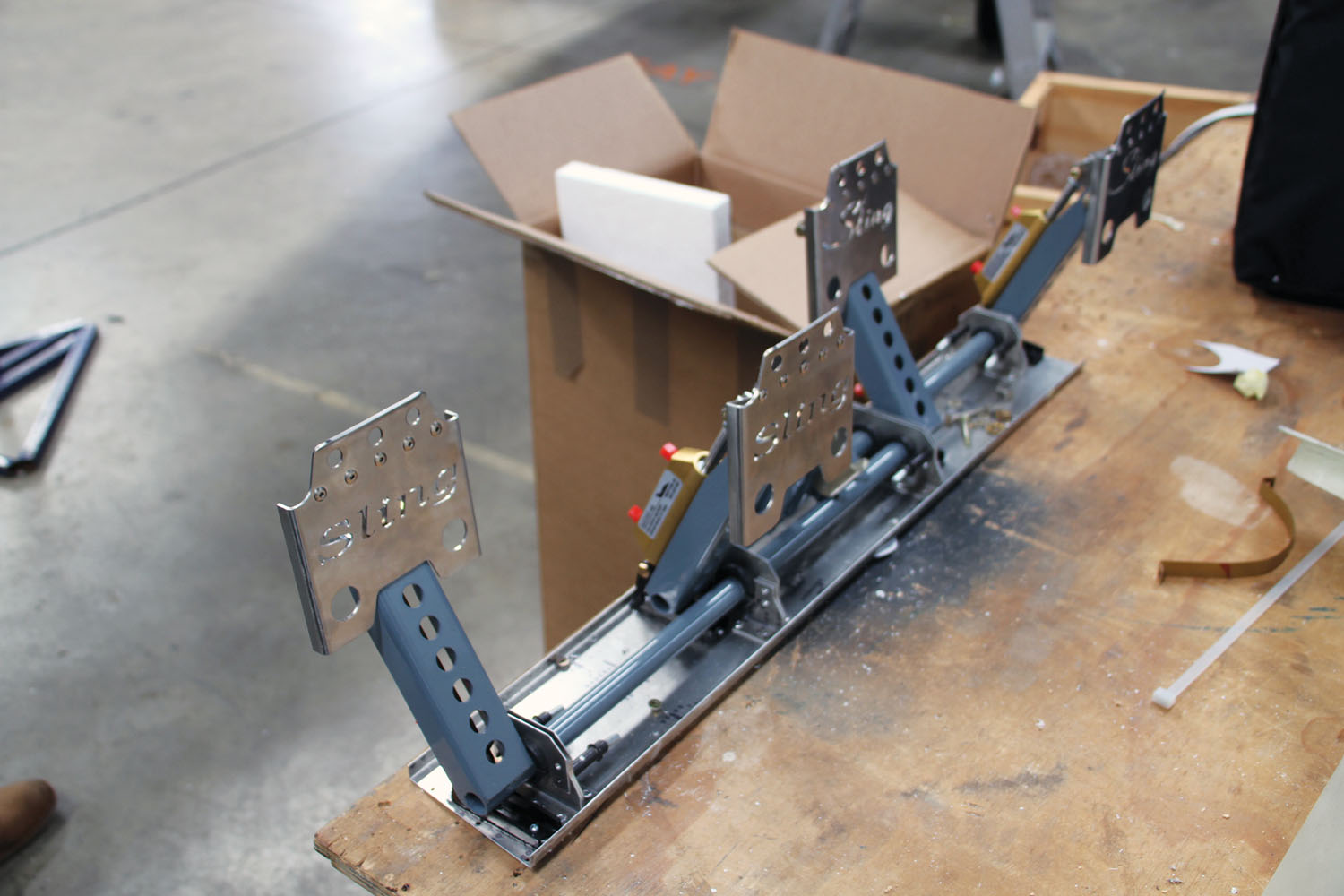

Looks like a nice little plane, and that was a thorough review as well.
The editing maybe should be updated as “udder pedals ready to be fitted” might be suitable on a farm, but not really on an aircraft!
65KIAS short final doesn’t augur well for the tailwheel version functioning as a backcountry airplane. Ordinary, longish grass strips would be fine.
They always said it wouldn’t be a STOL plane, designed it as a traveler. Like the TSi but with a high wing.
It’s refreshing to read an article so rich in real technical details from someone who builds kits. The wing looks like that from the Vashon Ranger R7, more brilliance from the great Ken Krueger. 145hp is going to be on the low side for two American-sized pilots, let alone more of them in the back seat. It will likely be similar to my old C170 – a good two-pilot, full fuel and camping gear hauler. But faster. Strutless has so many advantages. Note this airplane operates best on Mogas, just as my 1952 C170 did.
Looks really nice. But quarter mil plus the 1400 hours. No way around that these days though. Hope it is a big success.
to be fair the quarter mil price includes the quickbuild option $28,000 the airframe parachute which is $12,500 and a pre-built IFR glass panel which is $42,000. You can get rid of the quickbuild entirely if you are willing to add an extra 500 hours and the IFR panel cost can be reduced significantly if you do it yourself and possably ditch the IFR.
Seems like a nice bird.
If they can move the wing to the top and put a fancy new composite fuselage on it, you’d think Cessna could leave their wing where it is and do the same.
Well, surely if it were doable, Textron Cessna would have done that for us already, right?
hey! April Fool’s Day was over three months ago.
(Why does the world need another small airplane design when sales are not great?)
After flying a 182 for the last 10 years, I don’t want to fly a 172, much less this aircraft. Build one similar to the 182 and then let’s talk.